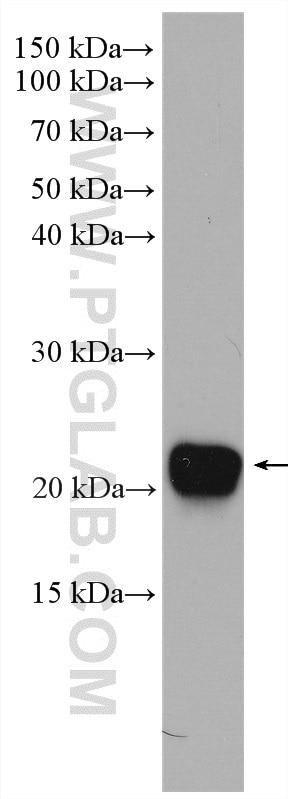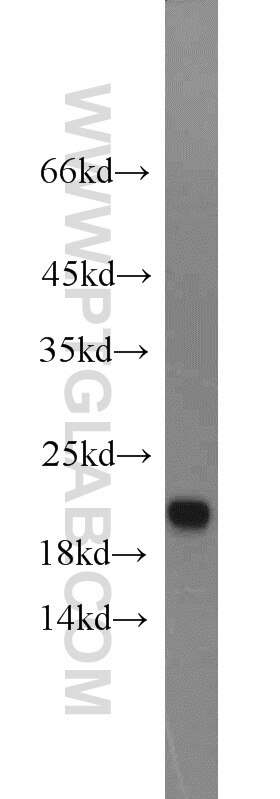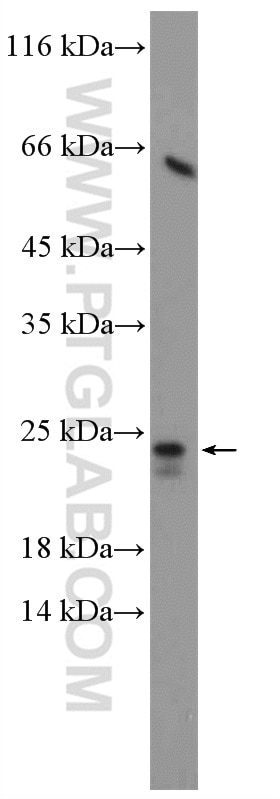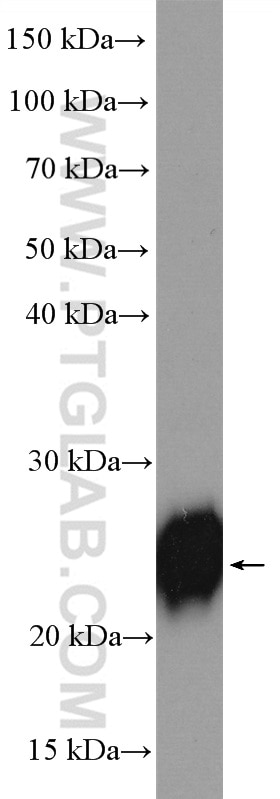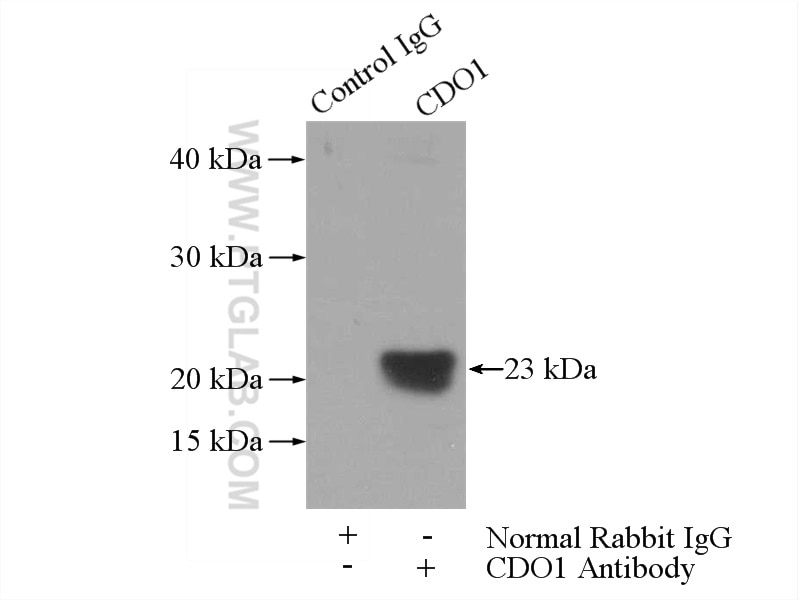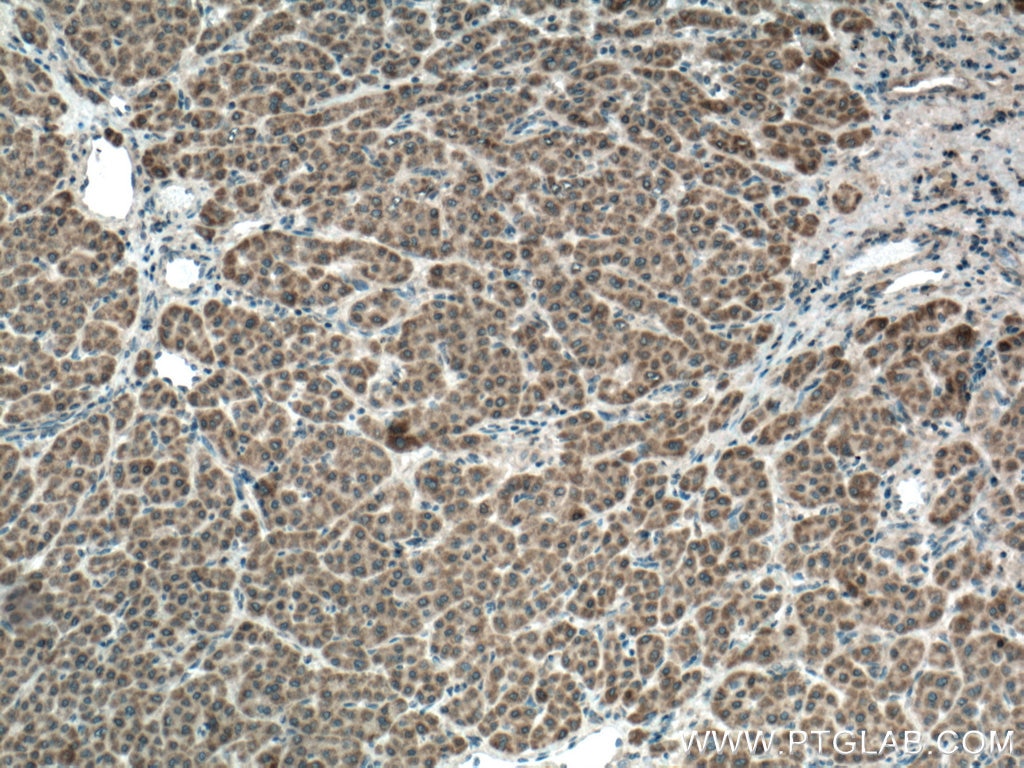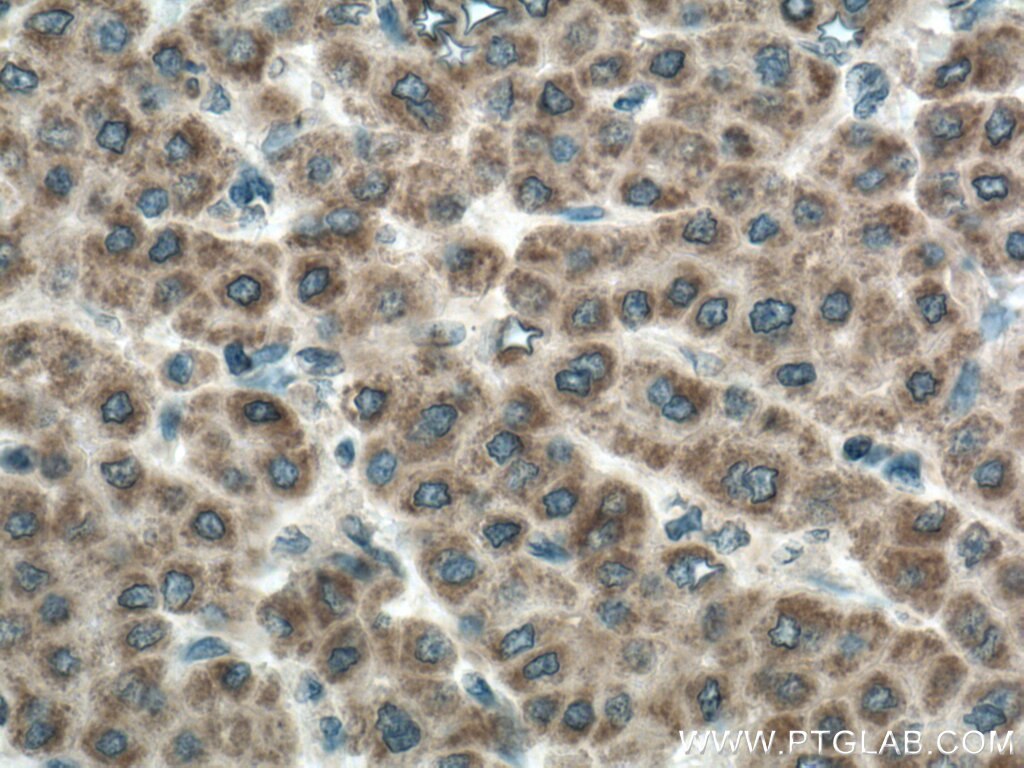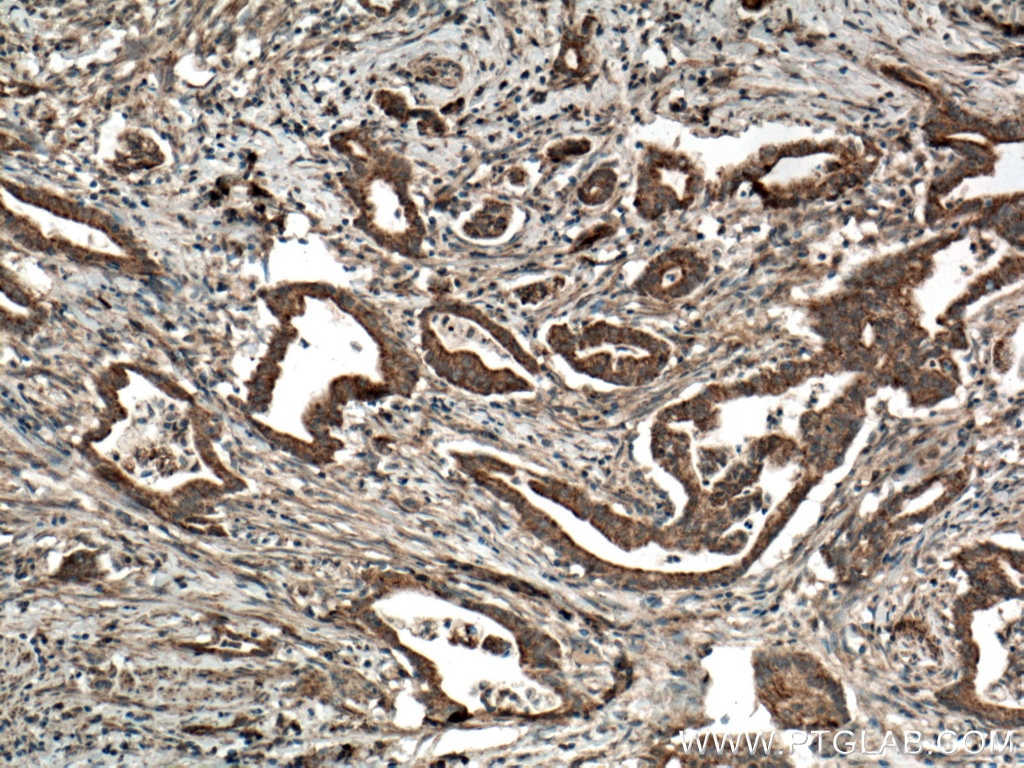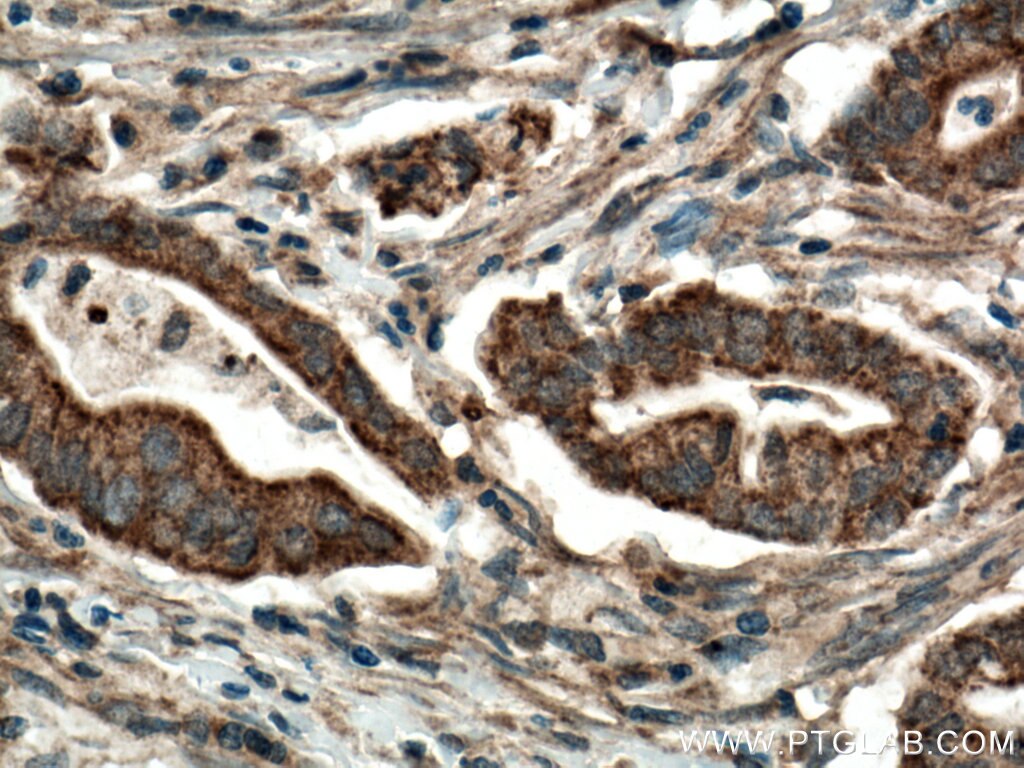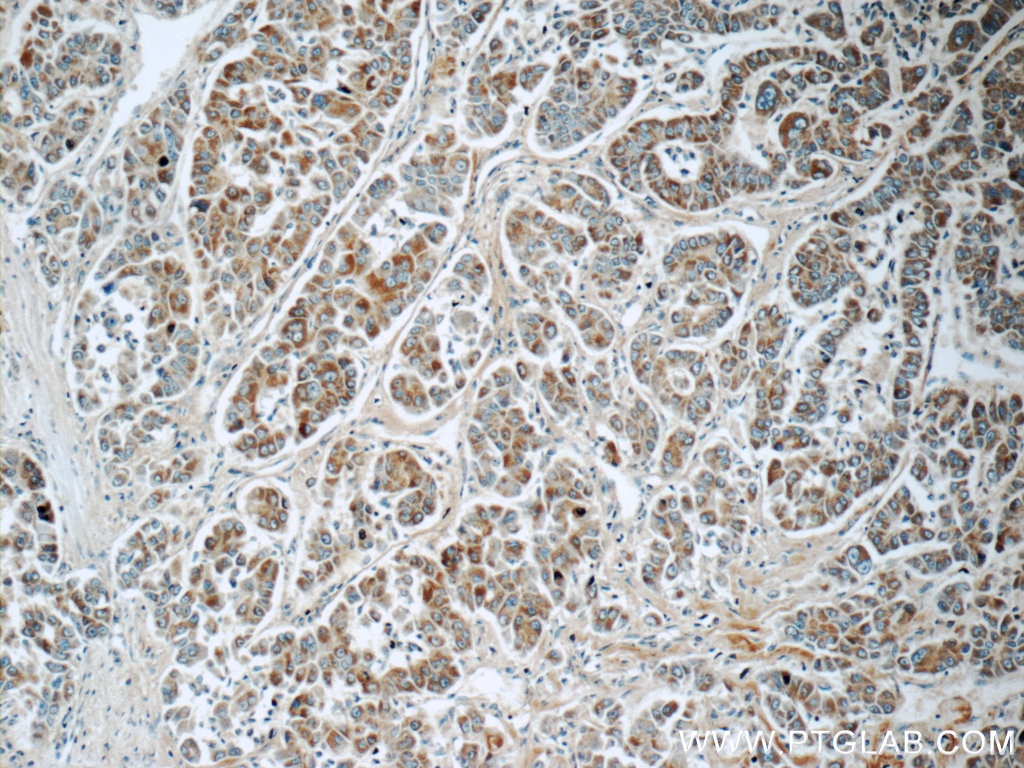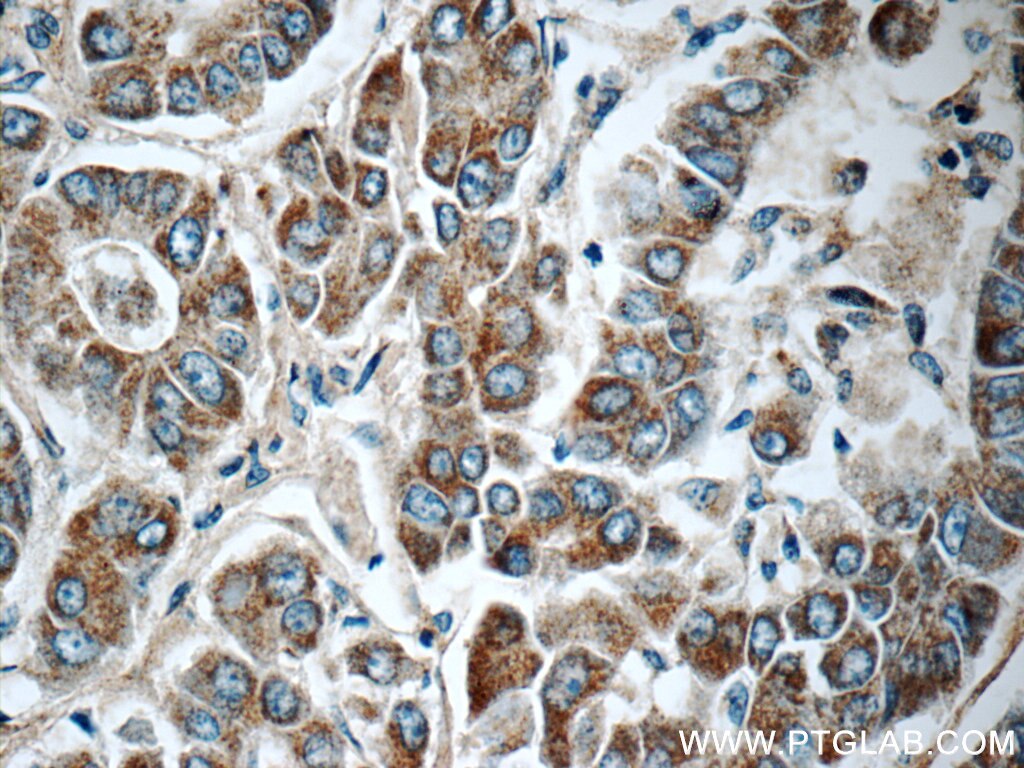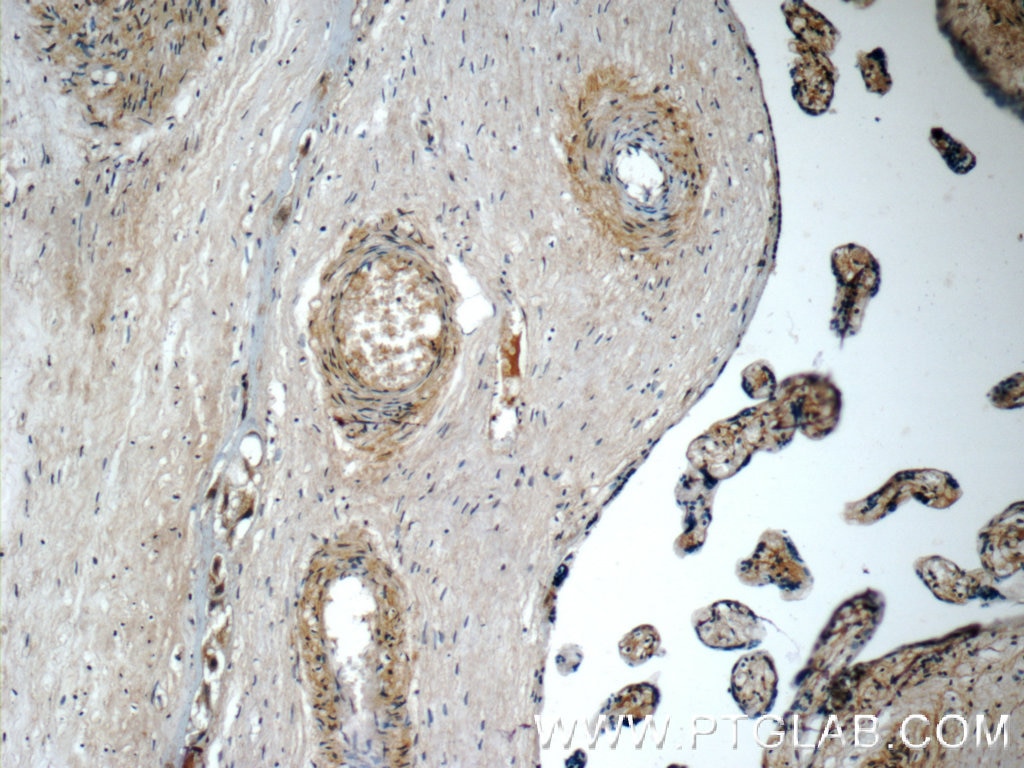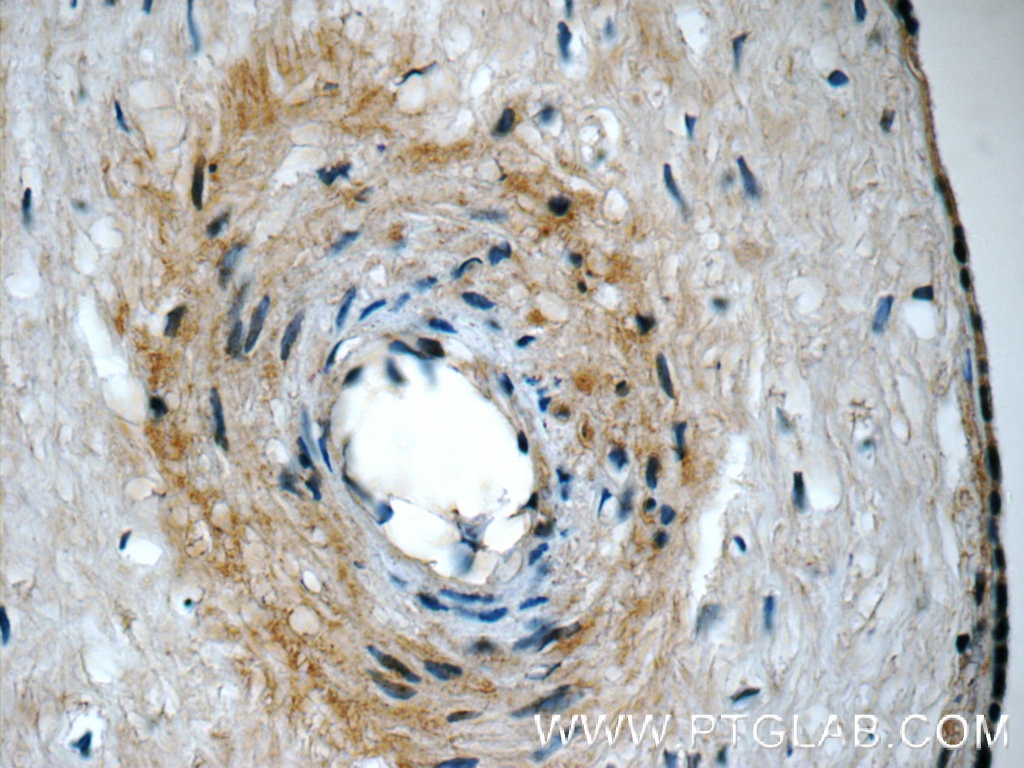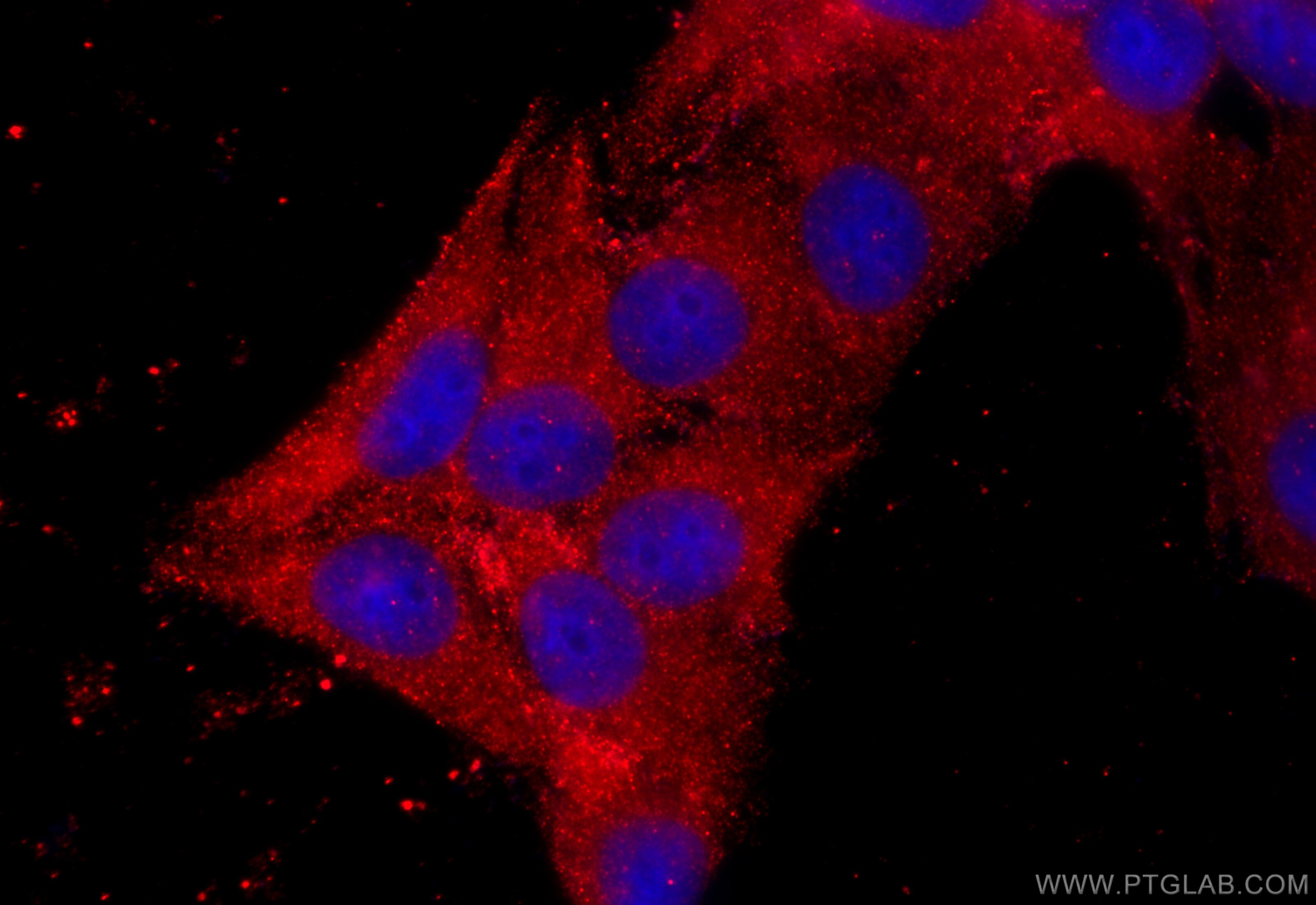Tested Applications
| Positive WB detected in | mouse liver tissue, rat liver tissue |
| Positive IP detected in | mouse liver tissue |
| Positive IHC detected in | human liver cancer tissue, human placenta tissue, human pancreas cancer tissue Note: suggested antigen retrieval with TE buffer pH 9.0; (*) Alternatively, antigen retrieval may be performed with citrate buffer pH 6.0 |
| Positive IF/ICC detected in | HepG2 cells |
Recommended dilution
| Application | Dilution |
|---|---|
| Western Blot (WB) | WB : 1:1000-1:6000 |
| Immunoprecipitation (IP) | IP : 0.5-4.0 ug for 1.0-3.0 mg of total protein lysate |
| Immunohistochemistry (IHC) | IHC : 1:50-1:500 |
| Immunofluorescence (IF)/ICC | IF/ICC : 1:200-1:800 |
| It is recommended that this reagent should be titrated in each testing system to obtain optimal results. | |
| Sample-dependent, Check data in validation data gallery. | |
Published Applications
| KD/KO | See 1 publications below |
| WB | See 13 publications below |
| IHC | See 7 publications below |
Product Information
12589-1-AP targets CDO1 in WB, IHC, IF/ICC, IP, ELISA applications and shows reactivity with human, mouse, rat, pig samples.
| Tested Reactivity | human, mouse, rat, pig |
| Cited Reactivity | human, mouse, rat |
| Host / Isotype | Rabbit / IgG |
| Class | Polyclonal |
| Type | Antibody |
| Immunogen | CDO1 fusion protein Ag3294 Predict reactive species |
| Full Name | cysteine dioxygenase, type I |
| Calculated Molecular Weight | 200 aa, 23 kDa |
| Observed Molecular Weight | 23 kDa |
| GenBank Accession Number | BC024241 |
| Gene Symbol | CDO1 |
| Gene ID (NCBI) | 1036 |
| RRID | AB_10638145 |
| Conjugate | Unconjugated |
| Form | Liquid |
| Purification Method | Antigen affinity purification |
| UNIPROT ID | Q16878 |
| Storage Buffer | PBS with 0.02% sodium azide and 50% glycerol , pH 7.3 |
| Storage Conditions | Store at -20°C. Stable for one year after shipment. Aliquoting is unnecessary for -20oC storage. 20ul sizes contain 0.1% BSA. |
Background Information
CDO1(cysteine dioxygenase type 1) is also named as CDO and belongs to the cysteine dioxygenase family. It is an enzyme that adds molecular oxygen to the sulfur of cysteine, converting the thiol to a sulfinic acid known as cysteinesulfinic acid (3-sulfinoalanine) and CDO1 is one of the most highly regulated metabolic enzymes responding to diet(PMID:19011731). The expression of CDO can significantly decrease the level of intracellular cysteine and this reduction is also associated with a decrease in total glutathione levels(PMID:17327371). Cysteine dioxygenase (CDO) plays a critical role in the regulation of cellular cysteine concentration andmultiple forms of CDO (23 kDa, 25 kDa, and 68 kDa) have been claimed based upon separation and detection using SDS-PAGE/western blotting(PMID: 14752623).
Protocols
| Product Specific Protocols | |
|---|---|
| WB protocol for CDO1 antibody 12589-1-AP | Download protocol |
| IHC protocol for CDO1 antibody 12589-1-AP | Download protocol |
| IF protocol for CDO1 antibody 12589-1-AP | Download protocol |
| IP protocol for CDO1 antibody 12589-1-AP | Download protocol |
| Standard Protocols | |
|---|---|
| Click here to view our Standard Protocols |
Publications
| Species | Application | Title |
|---|---|---|
Cell Death Discov Cysteine dioxygenase 1 attenuates the proliferation via inducing oxidative stress and integrated stress response in gastric cancer cells | ||
Int J Biol Sci Ferroptosis-associated molecular classification characterized by distinct tumor microenvironment profiles in colorectal cancer. | ||
J Ethnopharmacol Integration of metabolomics and transcriptomics to reveal anti-chronic myocardial ischemia mechanism of Gualou Xiebai decoction. | ||
Ann Surg Oncol Promoter DNA Hypermethylation of the Cysteine Dioxygenase 1 (CDO1) Gene in Intraductal Papillary Mucinous Neoplasm (IPMN). | ||
Cell Mol Neurobiol Taurine Alleviates Chronic Social Defeat Stress-Induced Depression by Protecting Cortical Neurons from Dendritic Spine Loss. |
